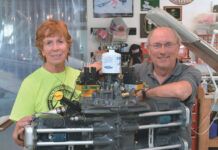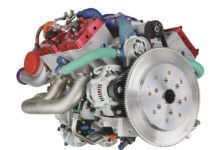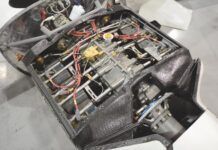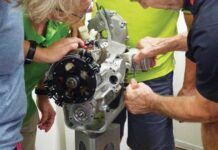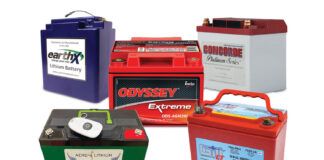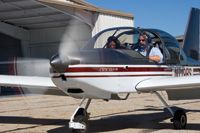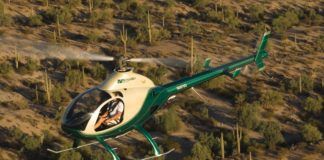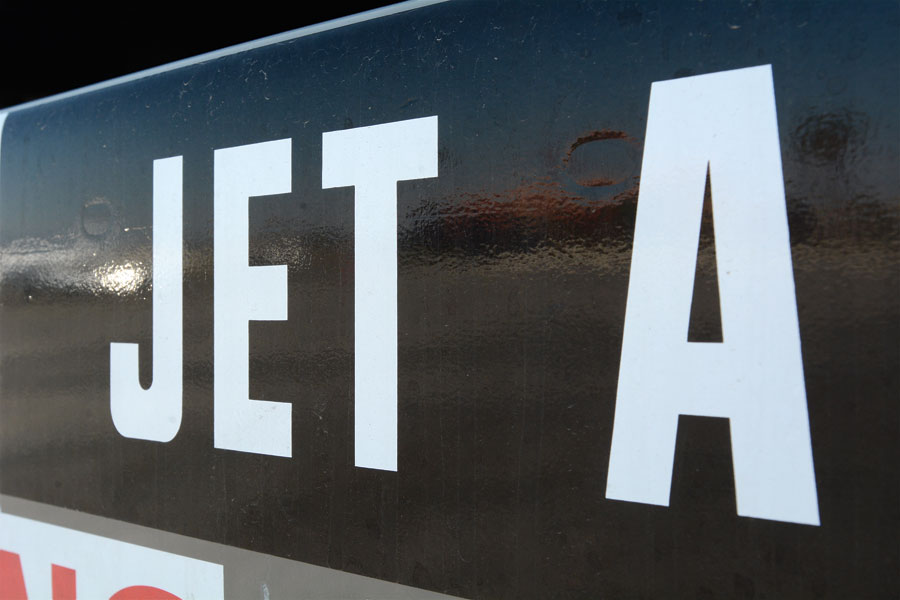
While diesel engines naturally churn out the torquey, steady-state power airplanes live on, the recent move to “heavy fuel” engines is all about fuel availability and economy. It’s tough to ignore around a 20% gain in range and perhaps a 40% reduction in fuel cost.
Gasoline has been constant with aviation piston engines since the Wright brothers, and for good reason. Gasoline engines are lightweight, powerful, and the fuel itself benefitted from extensive research during WW-II.
But there’s always been an alternative in diesel, or Jet A to us scarf-and-goggle types. Jet A piston engines have found favor overseas where 100LL is impossible to find or excessively priced, and perhaps here too should avgas become problematic in the U.S. So, while Jet A piston engines currently make little economic sense to domestic general aviation enthusiasts, understanding the basic differences between these closely related fuels and the engines that consume them is good fundamental knowledge for aviators.
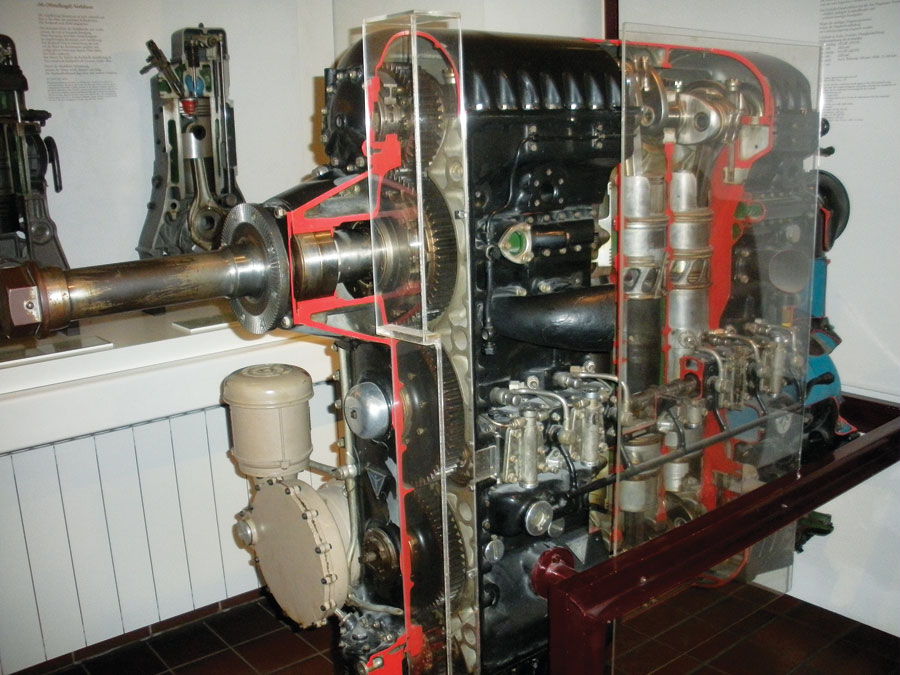
Prior to the modern era, the only successful aviation diesels were in airships and the Jumo 205 of 1935. A 2-stroke, opposed cylinder design, the big Jumo toiled in transport and long-distance maritime patrol planes. This cutaway example is in the Deutsches Museum in Munich, Germany.
Fuel Availability
Once a given, avgas is already unavailable in much of the world. But thanks to the rapacious appetite for jet fuel by the airlines and turbine-powered general aviation aircraft, Jet A is a certainty worldwide. Furthermore, the military is the only player worth mentioning in the development of new piston engines because they are the only ones with the budget to bring new designs to fruition given the market, bureaucratic, and legal strangulations in the civilian sector. And the military is not interested in gasoline, having decades ago picked diesel/Jet A as a less explosive, higher-mileage, common fuel for everything from tanks to generators to fighter jets. In short, the powers behind today’s piston engine development (drones) are set on Jet A.
The Fuels
So, what are gasoline and diesel fuels? They’re both petroleum products, distilled from the same distillation tower at the refinery. Gasoline is the lighter of the two; that is, it’s found higher in the distillation tower and is typically quoted as weighing 6.2 pounds per gallon.
Diesel, or to be more specific, Jet A, is often quoted at weighing 6.8 pounds per gallon. Precise weights vary with the exact blend of fuel and the temperature it’s weighed at, but you get the idea: Diesel weighs about 8.8% more than gasoline.
Diesel also has a higher energy content than gasoline, around 13% more. And by energy content we mean the number of BTUs per gallon. In other words, burn one gallon of diesel fuel and you get 13% more heat than from burning a gallon of gasoline. So, diesel/Jet A weighs more, but offers greater power or fuel economy possibilities based solely on the chemistry of the fuels, but not accounting for differences in engine efficiency or weight, which we’ll get to later.
Diesel’s flashpoint is 165F, while volatile gasoline flashes at just 45F. As boaters are well aware, diesel is much less explosive than gasoline. This eagerness of gasoline to combust is a principle characteristic of the fuel. It makes gasoline engines relatively easy to start, and it also is key to the fuel’s octane rating. Conceptually what’s important is gasoline’s ready-to-party nature can lead to destructive, abnormal combustion when at elevated cylinder pressures.
We’ll also point out that diesel for ground vehicles is refined to a different standard than Jet A. Your pickup truck burns Ultra-Low-Sulfur Number 2 diesel, which is slightly higher viscosity and distinctly lower sulfur content than Jet A, which more closely resembles Number 1 diesel, which in turn most closely resembles kerosene. Thus, Jet A is thinner (lower viscosity) and higher sulfur than common Number 2 diesel. Jet A also offers less lubricity than Number 2 diesel, but additives can take care of that issue.
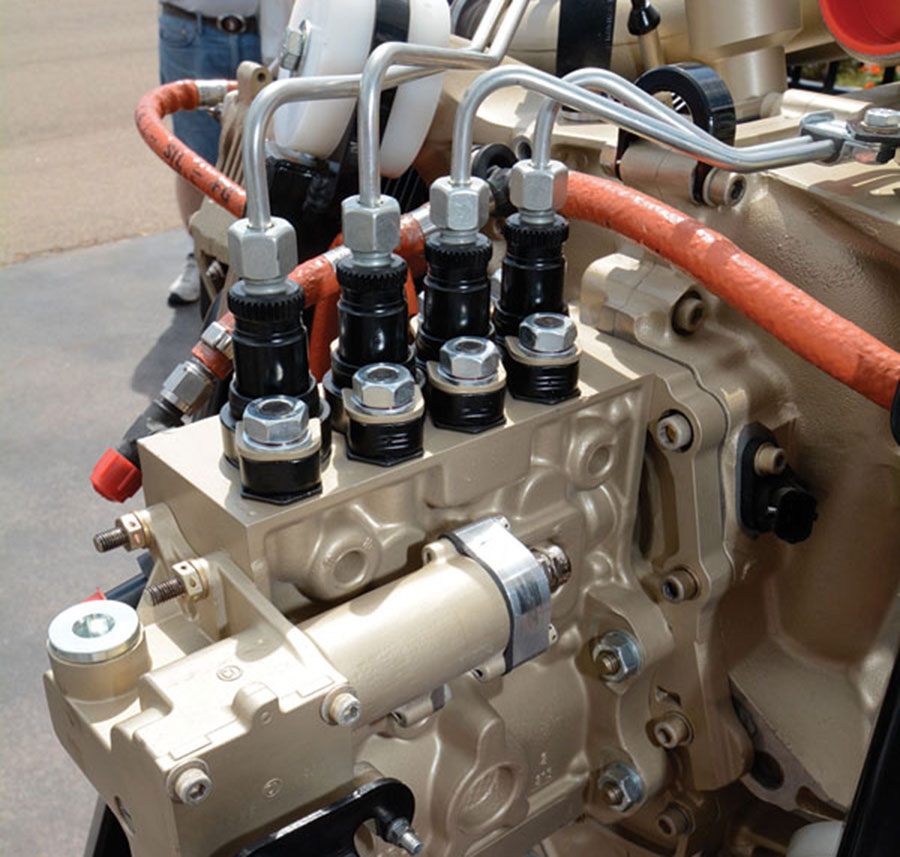
Bosch developed the in-line diesel injection pump before WW-II and it was a diesel mainstay until common rail systems took over. Seen here on a Continental TD-300, the inline pump uses one cam and plunger per cylinder. It’s less precise than common rail and uses many closely machined mechanical parts.
For our broad-brush purposes here, there’s no need to get bogged down in all these details, but as 100LL goes away and diesel piston engines perhaps appear in greater numbers, the mechanically inclined may find such nuances of greater practical interest. In the meantime there is ample anecdotal evidence of ground diesel engines running long-term without issues on Jet A, and newer diesel piston aero engines are designed to burn Jet A.
World Fuels
While the ratio of gas-to-diesel refined from a barrel of crude oil is somewhat adjustable, a typical value for U.S. refineries is about 12 gallons of diesel fuel and 19 gallons of gasoline per 42-gallon barrel of crude oil. Because these fuels are world products, and different markets have different appetites, it is not unusual for fuels refined in one region to be sold in another. In Spain, for example, new car registrations were 68% diesel in 2015, and U.S. Gulf Coast refineries can profitably ship “excess” diesel fuel to Spain, while Spanish refineries can sell their “excess” gasoline elsewhere—such as the U.S.
The point is, the demand, taxation, and distribution of these fuels is a worldwide phenomena, so what happens “over there” will affect you at your local fuel pump.
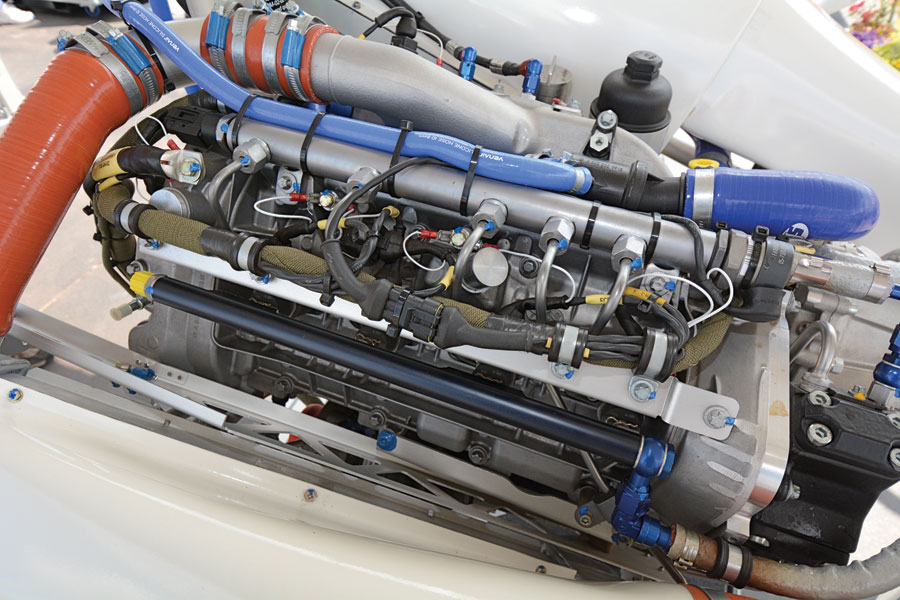
Steel tube fuel lines and the large-diameter fuel rail mark the common rail injection on a 2.0-liter Thielert/Centurion/Continental 4-cylinder. Electric wiring is another necessity to drive the electronic fuel injectors. Complexity seems to follow precision in engine management, and a modern Jet A piston airframe must be electrically robust.
Combustion in Gasoline Engines
In earlier articles in this series, we discussed how gasoline engines introduce fuel to the combustion chamber via carburetion or various forms of fuel injection. In all these gasoline scenarios, fuel is present in the combustion chamber before ignition begins via the spark plug. Once the spark plug ignites the flame kernel, the fuel burns outward in a flame front sweeping across the combustion chamber. In aviation engines two flame fronts, one from each spark plug, move outward and more or less meet in the center.
Flame front speed—the speed of combustion—depends on several things, but the pressure and temperature inside the cylinder are primary players. The higher the pressure or temperature, the more closely spaced and ready for combustion the gasoline is, and at higher pressures combustion is more akin a bomb explosion than an organized flame front marching through. Anything that compresses the air/fuel mixture—dense sea level air, high compression ratios, supercharging, advanced ignition timing—lowers the detonation threshold. That’s why hot-rodded engines are more prone to self-destruction; they’re tuned with less of a detonation safety margin.
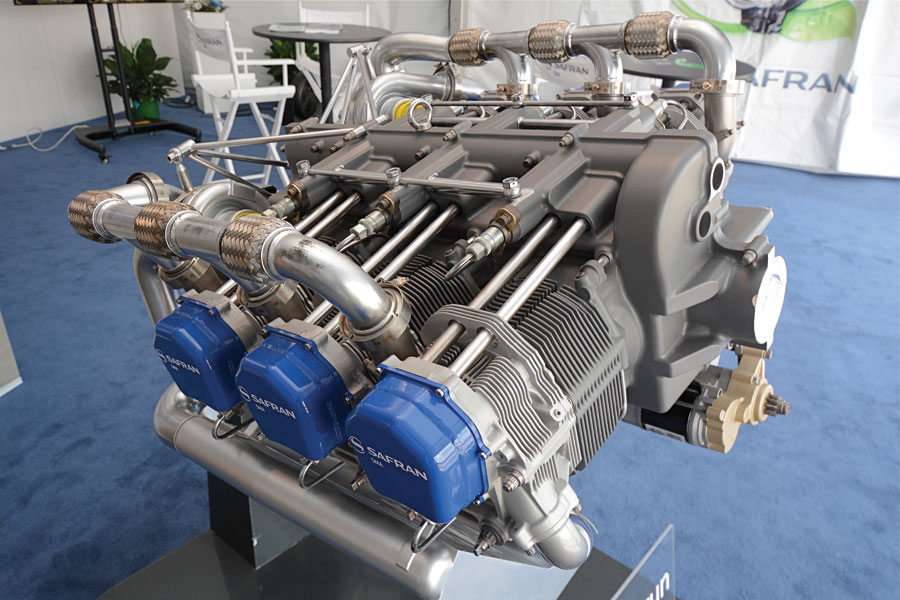
Elder statesman of the modern aviation diesel is the Safran/SMA SR305-230 6-cylinder vetted in several certified airframes. It’s one of the few air-cooled Jet A piston powerplants, uses twin turbos with no charge cooling, but has single-lever power control.
And detonation is the poster child for destructive abnormal combustion. After the spark plugs have fired and the flame fronts are moving, the rapidly rising pressure can explosively detonate the remaining air/fuel mixture. This means the remaining air/fuel mixture “flashes off,” rather than burning rapidly yet coherently. Detonation occurs when pressure in the cylinder exceeds the gasoline’s anti-detonation threshold and can be wildly destructive, such as cracking or melting pistons. For decades we’ve enjoyed high-octane 100 Low Lead gasoline; its much discussed lead content is there precisely to raise the fuel’s performance index (octane rating). Lead, while distinctly environmentally unfriendly, is a wonderfully effective, inexpensive anti-knock element; and detonation is, thankfully, a rare thing in GA airplanes.
Another abnormal combustion possibility is pre-ignition. Because fuel is present in the combustion chamber prior to the desired start of combustion, it is possible for an abnormally hot part of the cylinder to ignite the air-fuel mixture before the spark plug fires. Pre-ignition is relatively rare in typical aircraft engines, for which we can be profoundly thankful as pre-ignition is, if anything, more quickly destructive than detonation.
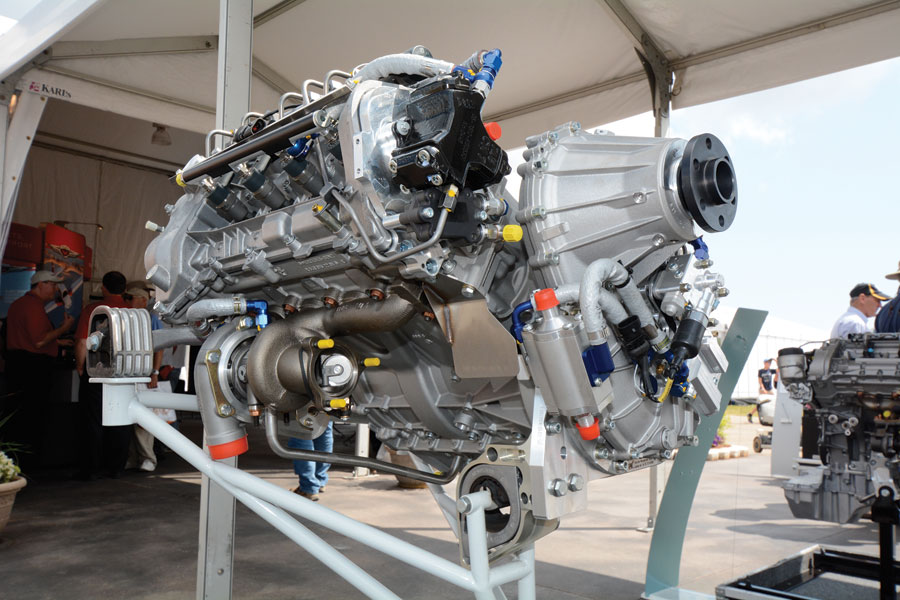
Continental’s buyout of the Thielert/Centurion has given them a now well-developed line of 4-cylinders based on Mercedes auto engines. Befitting a premium design, these engines feature everything from turbos to gear reduction prop drives and a matching price tag.
Diesel Combustion
Diesel engines employ totally different fuel and ignition systems than gasoline engines. Most notably, there is no ignition system per se. Instead, diesel compression ratios are so elevated—18:1 or higher—that air trapped in the cylinder on the compression stroke gets hot enough merely from compression that any fuel sprayed into the cylinder will instantly ignite. In other words, the thing that kills gasoline engines—cylinder pressures high and hot enough to spontaneously combust the fuel—is what makes diesel engines run. The difference is there is no fuel in the diesel combustion chamber until the engine is ready to burn it, and the fuel burns as it is sprayed into the combustion chamber; there is no excess air/fuel mixture loitering in the chamber waiting to explode.
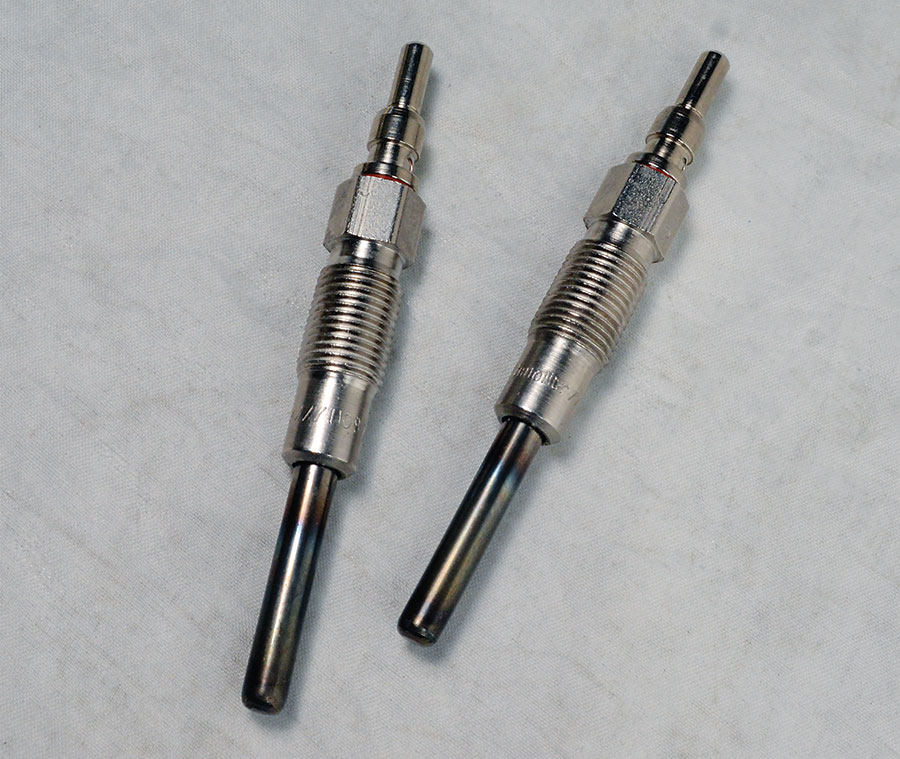
Glow plugs protrude into the diesel combustion chamber to aid starting. Just small resistance heaters, glow plugs pose a large current draw along with the starter motor, so generous battery power is a diesel engine must.
So, critical to a diesel is spraying the right amount of fuel into the combustion chamber at the right time. As a result, all diesels employ high-pressure direct-cylinder fuel injection. But when you think about it, the diesel fuel system is understandably complex because the timing, volume, and rate of fuel injected controls almost all aspects of diesel engine operation.

How’s this for a cylinder? This is the outside of one Gemini 100 cylinder; the small round holes are intake ports, the large ovals exhaust. The Gemini is water cooled, lightweight, promises rigidity and affordability; target introduction date is early 2017.
Traditional diesel fuel systems begin at the fuel tank. A low-pressure, high-volume fuel pump, variously called a supply, transfer, or lift pump, transports fuel from tank to engine. Such supply pumps can be the familiar engine-driven diaphragm type “fuel pumps” seen on gasoline engines, or more typically today, electric pumps mounted in or near the fuel tank.
At the engine the injection pump raises the fuel pressure to 900 psi or more, along with parceling out discrete portions of fuel to each cylinder. The high pressure is needed to overcome the cylinder pressure the injector is spraying into, plus the higher the fuel pressure, the greater the fuel atomization (breaking into fine droplets) and thus the more complete combustion.
Such traditional injection pumps are purely mechanical and are in effect analog computers because they use inputs such as engine rpm and desired engine output as determined by the pilot to figure how much fuel is injected at what time. Such systems were the norm until the mid-1990s.
Today, mechanical diesel injection pumps have been replaced by electronic fuel injectors and a separate, very-high-pressure fuel pump (15,000 psi is common; the latest systems generate 40,000+ psi). The injectors and high-pressure fuel circuit are ganged together in robust fuel rails, much as in the familiar gasoline multi-port injection. These electronically controlled systems are known as common rail systems after the fuel rails joining the injectors together.
Common rail systems allow very sophisticated control of the fuel injection timing and multi-strike, multi-volume pulsing of each injection event. Combustion of the fuel injected is more complete for better power, fuel economy, and reduced emissions. As a result, modern diesels are easy to start, produce little soot, can be very quiet, and produce prodigious power.
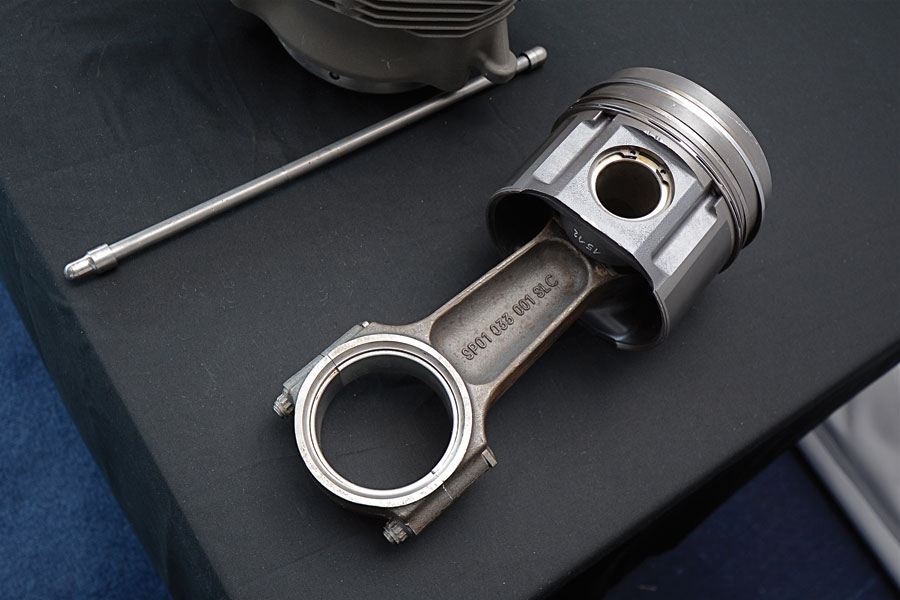
The main challenge for aviation diesels has been the diesel’s traditional heavyweight construction exemplified by this tractor-like SMA piston and connecting rod. Thanks to carefully computer controlled fuel systems, the latest diesels don’t fuel knock and feature lighter construction than legacy diesels.
Many diesel engine characteristics result from their unique combustion process. Because engine speed and acceleration are determined by the timing and volume of fuel delivered, there is no need to throttle the intake air. This eliminates the energy lost to sucking air past the throttle blade in a gasoline engine for useful gain in efficiency. Furthermore, diesels inherently run lean of peak at all but very high power output and by nature respond favorably to as much air as you can push through them—diesels and supercharging were made for each other.
As we’ve seen, without excess fuel present, detonation as gasoline engines know it is not an issue with diesels, but the average combustion pressures are higher than in gasoline engines—the French SMA SR305-230 puts 90 inches on the manifold pressure gauge at full power with no time limit, or 60 inches at economy cruise, for example. There’s also the probability of abnormal combustion events—even of a localized nature in the combustion chamber—when the engine is cold or due to less than optimal fuel spray patterns, aggressive fuel timing, high transient loads, and so on.
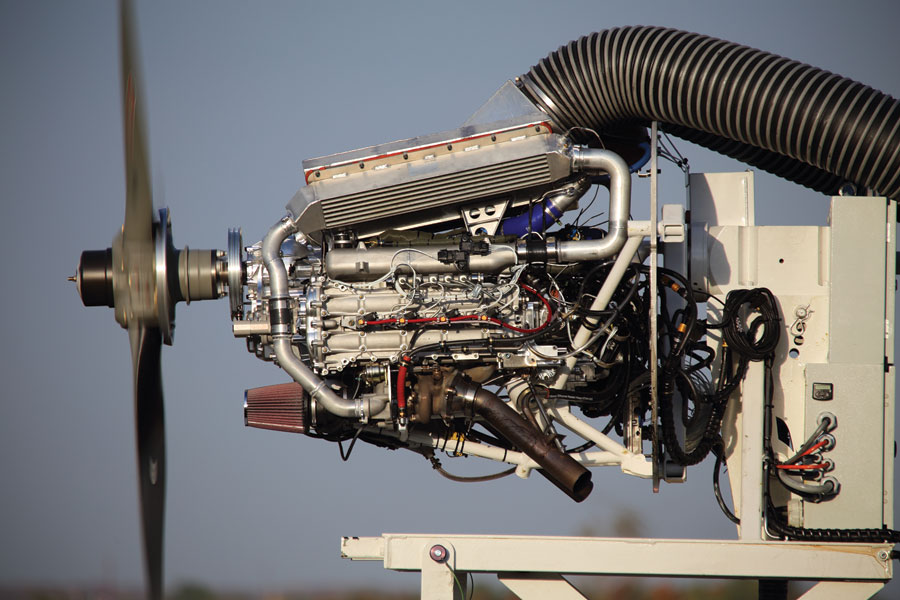
It’s clear from the Graflight V-8’s specifications that EPS’ philosophy is best practices all the way. The crankcase is durable graphite iron, the pistons lightweight steel, and there’s a full suite of vibration dampers, state-of-the-art electronics from Bosch, a torsionally damped spur gear PSRU and more. The engine turns 3500 rpm and uses 50 inches to make 350 hp.
Therefore, diesel engines must be mechanically very robust, which leads to large, heavy internal engine parts. Traditionally this has meant diesels were too slow, heavy, and cumbersome for aircraft, but modern common rail fuel control and computer modeling has resulted in lighter, higher-speed engines.
Furthermore, what really counts is the overall weight of the propulsion system. Individually a diesel engine and fuel may weigh more than their gasoline counterparts, but the diesel’s inherent fuel economy means the total installed weight could be lower because less fuel need be carried. This was the case with the classic airships; the Hindenburg’s diesel engines gave 900 continuous horsepower, weighed over 4,400 pounds apiece, but the fuel capacity was 65 tons. Gas engines would have weighed less, but required even more fuel.
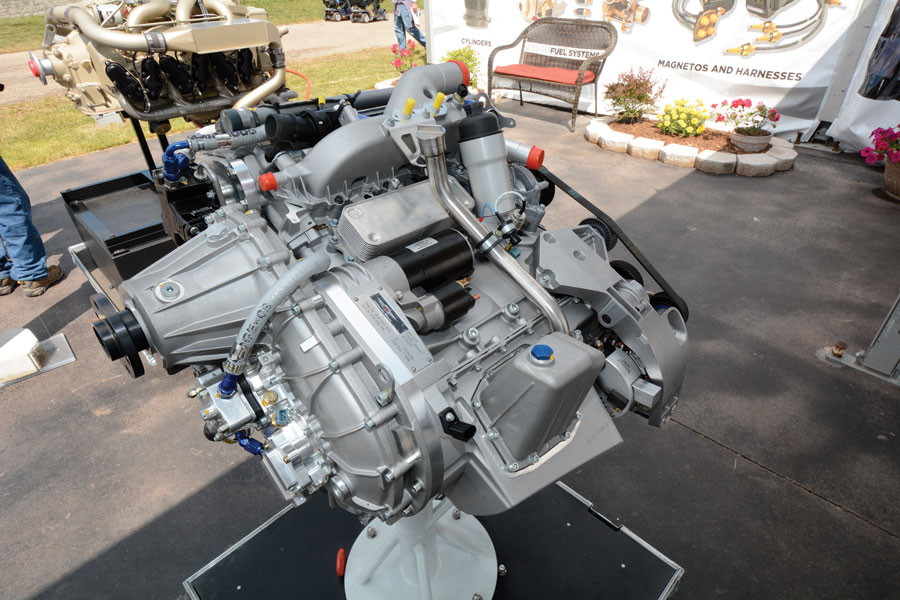
No doubt to make it package more like a flat engine, the CD-155 Continental is designed to mount on a slant. It’s rated to run on seemingly every variation of diesel fuel, including auto diesel, Jet A, Jet A-1, JP-8, and not surprisingly considering Continental’s owners and major diesel market, Chinese Jet Fuel No. 3.
Diesel Fuel Economy
And so we come to diesel’s big advantage over gas engines—about 30% greater fuel economy. As we’ve seen, the fuel itself is inherently more energy dense, and there are reduced pumping losses because no throttle is needed. But the biggie is the diesel’s high cylinder pressures; it simply squeezes the air harder than a gasoline engine can and thus gets more bang for the fuel buck. And don’t forget to factor in the reduced cost of Jet A.
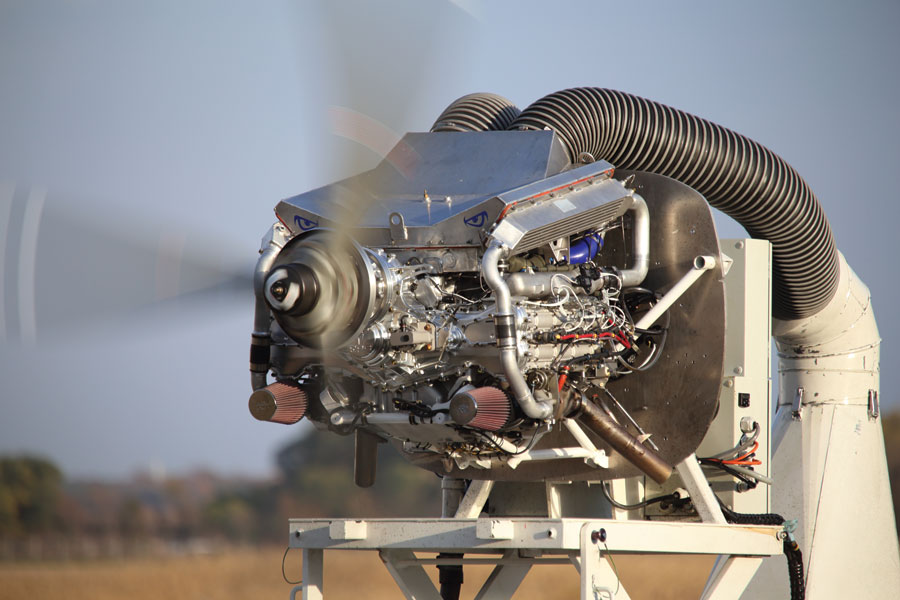
So far the strongest market for clean-sheet design diesels seems to be government drones and quality business aircraft. One engine in development that seems to have all the engineering and business details figured out is the Engineered Propulsion Systems Graflight V-8. The 350-hp 4.4-liter (264 cu. in.) uses a flat bank angle to mimic the big gas engines it’s designed to replace. It should debut in 2017.
Good, Not Cheap
In the real world diesel’s inherent downside is it is a premium powerplant and will always cost more than simpler gasoline engines. Diesels are more expensive because they have more mass, their fuel systems are more complex, they are always turbocharged and charge cooled, and due to their higher cylinder pressure, if you try to cut corners with a diesel design it won’t last. You simply can’t Cheap Charlie a diesel and have it live. That means higher initial purchase cost followed by lower operating costs, a calculus experience has shown contrary to human nature.
Given the realities of the current crop of well-entrenched, well-developed gasoline engines, there’s little chance a new diesel aviation engine will soon predominate in RVs and Zeniths. But wonderfully advanced, clean-sheet design aviation diesel engines are very much under development for military drones, and their superiority will drive the international and high-dollar sportsman market to the Jet A fuel pump eventually.
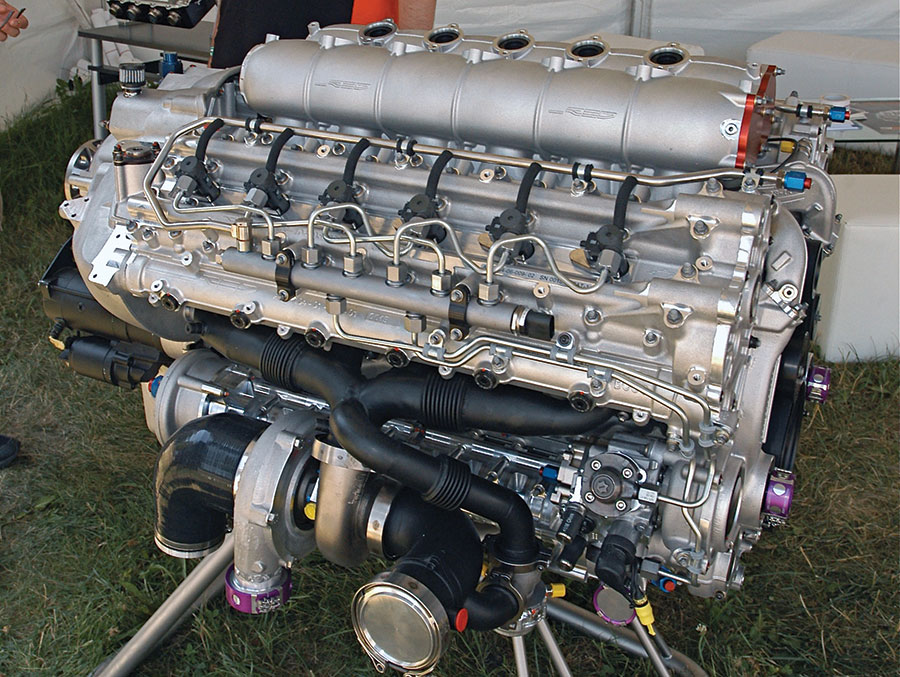
A proper gentleman flies behind 12 cylinders, hence the 500-hp Raikhlin Aircraft Engine Developments 90-degree V-12. Like the EPS, the RED engine appears quite modern, but has been searching for a market since debuting in 2012. The latest reports have it powering a new Yak 152 trainer slated to serve as the new Russian Air Force primary trainer.

![]()
Tom Wilson is a professional magazine writer and nurtures an ongoing affair with all things internal combustion. His writing is most often found in automotive magazines, but aviation is his first love. Working as a line boy, he learned to fly while in high school, but still hasn’t mastered the art of keeping a paper chart in an open cockpit.






